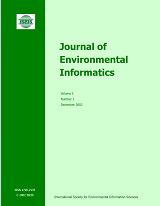doi:10.3808/jei.201700382
Copyright © 2024 ISEIS. All rights reserved
A Basic Hierarchical Graph Model for Conflict Resolution with Weighted Preference
Abstract
A novel hierarchical graph model for conflict resolution in which preferences are determined by weighting component graphs is proposed. This weighted hierarchical model contains three decision makers (DMs), one common decision maker (CDM) appearing in two local graphs, each with one local decision maker. Reachable lists and unilateral improvements for DMs are represented by matrices, which can be used to calculate stability results. Theorems reveal the relationship between the stability results in the hierarchical graph and in each local graph. Algorithms are designed to capitalize on these relationships in the calculation of stability. A case study of water diversion conflicts in China is provided to show how the new methodology can be applied in practice. The weighted hierarchical graph model improves the modeling of hierarchical conflicts by providing more flexibility in describing the preference of the CDM, who is the key decision-maker.
Keywords: hierarchical graph model, graph model for conflict resolution (GMCR), matrix representation, stability definitions, water diversion conflicts
Supplementary Files:
Refbacks
- There are currently no refbacks.
